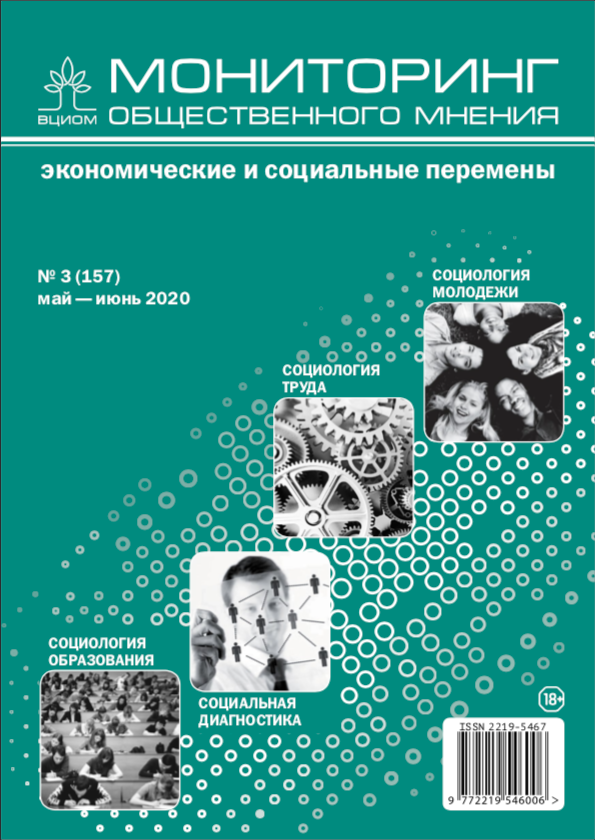Migration Intentions of Youth with and without Migrant Backgrounds: a Russian Case
DOI:
https://doi.org/10.14515/monitoring.2020.3.1632Keywords:
migration plans, migration intentions, youth, migrants, foreign students, second generation migrants, Central Asia, RussiaAbstract
Favorable demographic situation implies that the newly arrived migrants are willing to stay and the local population does not intend to leave the area. The article attempts to assess the perception of Russia as a place of living by different groups of mobile youth. The article is focused on the following groups of people aged 18-30: (1) working migrants, (2) foreign students, (3) the second and one-and-a-half generation migrants from the Central Asia, and (4) local youth. Based on a survey (N = 1143) conducted using targeting technique on Vkontakte social network in 2020, the authors examine, firstly, the migration moods of different groups of young people in a five-year perspective, secondly, the factors related to the plans to live in Russia or another country in five years, thirdly, the conditions under which those not planning to live in Russia in five years would change their plans.
About half of foreign students, working migrants and local youth as well as two-thirds of migrants of the second and one-and-a-half generation are going to live in Russia. The results of the study prove the assumption that objective economic well-being indicators, f.e. salary size, are less likely to be an important factor behind migration plans of young people than the subjective indicators, such as satisfaction with income, economic situation or job in general. A sense of legal insecurity is the factor that pushes young people out of Russia regardless of their occupation or migration background. Besides that, crucial factors can be different depending on the group. Foreign students may pay attention to their attachment to the home country and confidence that they will be hired in Russia. Connections with people living in Russia or other countries are important for local youth and the second and one-and-a-half generation migrants. The working migrants stress their attachment to their home country, whereas the working respondents among locals or the second and one-and-a-half generation migrants believe that they may have a higher income in another country.
Acknowledgments. The study is funded by the Russian Science Foundation (project no. 18-78-00019).
Downloads
Published
How to Cite
Issue
Section
License
Copyright (c) 2020 Monitoring of Public Opinion: Economic and Social Changes Journal (Public Opinion Monitoring) ISSN 2219-5467

This work is licensed under a Creative Commons Attribution-NonCommercial-ShareAlike 4.0 International License.






